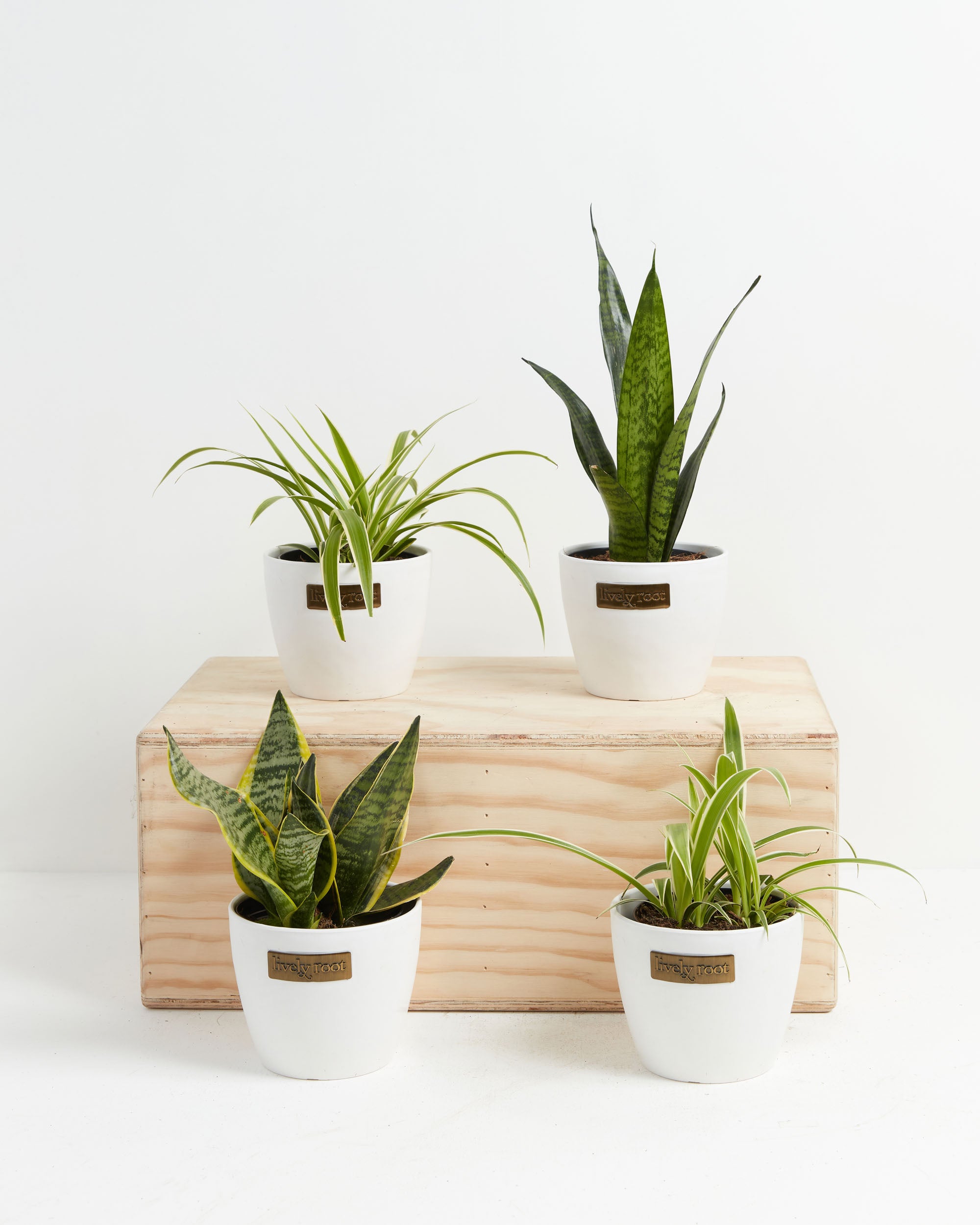

Get rid of your arachnophobia and ophidiophobia by learning to love spiders and snakes in plant form!
Our snake and spider plant bundle for delivery gives you an instant greenery fix. They include two spider plants (Chlorophytum Comosum) and two snake plants (Sansevieria Species), named because of the unique shape of their leaves. Easy to care for, they're the perfect starter set. Cluster them together to create your own mini jungle or separate them out for four statement pieces. Just keep them out of strong, direct sunlight.
Sansevieria species & Chlorophytum comosum Care Guide

These plants enjoy moderate to bright indirect light.
Water well when received, then allow the soil to dry out between waterings. Snake plants can sustain less water than spider plants.
Spider plants enjoy humidity. Spritz occasionally.
Spider plants will endure temperatures as low as 45°F without injury, but temperatures below 65°F retard growth. Temperatures above 90°F will not immediately damage the plant but raise the transpiration rate and increase the uptake of potentially toxic micronutrients.
Outside: Grow in morning light, partial shade (4-6 hours) where nights are above 45°F.
Indoors: This plant prefers bright, to medium indirect light for at least six hours in a southern, eastern and western windows.
Fertilize bimonthly during their growing period. Use a balanced liquid fertilizer at 1/2 strength. Reduce fertilizing during the fall and winter months while the plant is in their dormant phase. If brown tips form, withdraw from fertilizing. Raise the humidity around them and never use chlorinated or fluoride in the water.
Repot the Spider Plant in the early spring in a well draining soil mix. Use a container with drainage holes. Add a piece of screen to keep the soil from spilling out but allowing drainage. Water the plant ahead of time to hydrate. Add the mix to the bottom of the new slightly larger container. Tease the roots if they are root bound in the pot. Carefully place in the center, adding backfill around the edges. Leave a 1/2 inch of space between the soil and the top edge to prevent water spillage. Water thoroughly and let drain.
If foliage needs a trim back, use sterilized scissors. Cut back to the base of the stem and the spiderettes. Trim off any blackened or brown tips to keep energy going to the main plant. Remove any dead, damaged or diseased leaves and clean debris from soil. Replenish soil as needed.
Remove a spiderette from the mother plant. Dip the end where the leaves originate into rooting hormone powder. Place in dampened soil. Cover the spiderettes with a clear, plastic bag and mist. Check soil moisture periodically. Within six weeks, the roots should be getting established. Place in bright to medium, indirect light and follow care instructions.






















